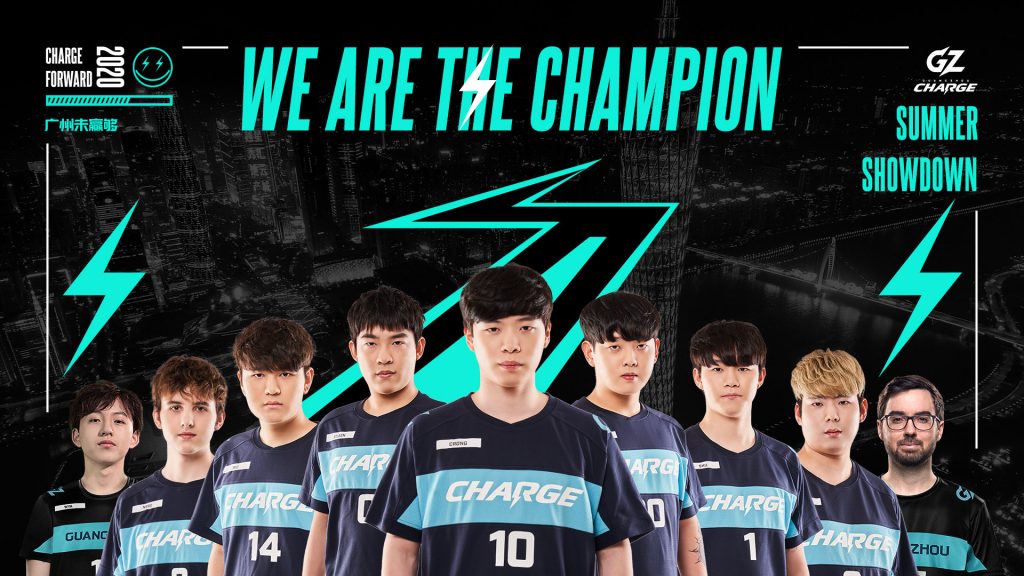The world’s two largest economies are also the most lucrative future markets for e-sports. The global gaming market is set to surpass USD 200 billion by 2023, according to a recent report from Newzoo, while the US and China accounted for over 72% of global gaming revenue in 2019.
The Chinese government has rolled out its “E-sports Beijing 2020” initiative, which aims to elevate China’s capital city as an international e-sports hub, backed by RMB 10 trillion (USD 1.4 trillion) in state-directed investment by 2025.
Additionally, the US and China are increasingly dominating major international e-sports competition. China won the League of Legends (LoL) World Cup in 2018 and 2019, while the US won the Overwatch World Cup in 2019 against China in the final.
Fueling the rise of this burgeoning industry is a talent pipeline that is fragmented and struggles to provide young gamers with organized competitions. In the United States, 21% of gamers are younger than 18 years old, while more than half of China’s 532.8 million gamers are under age 25.
For millions of these young gamers, the rapid development of the global e-sports market has inspired them to covet a professional career in one of their favorite hobby activities. A recent survey in Shanghai revealed that e-sports is the preferred career choice for those born between 2000 and 2010.
But the reality is less rosy. As with other professional sports, ascending to the peak of competitive gaming is a difficult journey, with far more attempts ending in failure than success.
In addition, there is not a well-established youth e-sports infrastructure to provide young players with a reliable pathway to a career in the field. This creates a significant bottleneck to the growth within the e-sports industry.
With consumer demand soaring within this immature but rapidly expanding sector, how are the US and China developing grassroots e-sports infrastructure and cultivating the next generation of professional gamers? How do aspiring e-sports professionals navigate an uncertain journey to the pro level?
Underdeveloped grassroots
The landscape of grassroots e-sports in the US is a difficult space to navigate. As a relatively new industry, there is a scarcity of tried and trusted business models. But that hasn’t stopped the US market from attracting startups looking to capitalize on the existing school-based model used in traditional sports recreation.
Johan van Breda, CEO of United States Esports Academy (USEA), founded his company in the US in August 2019, after successfully developing ZAG Academy in his native South Africa.
He explained to KrASIA how the US grassroots e-sports system is fragmented by regional administrations. “It’s not like a country like China, where there is a national mandate in place for certain things,” he said. “The US is controlled by the greater regional systems.” Regional oversight for the development of a grassroots e-sports infrastructure results in a lack of standardization and best practices.
Van Breda explained, “The US is still more of a free-for-all market with a lot of different operators, and less common practice installed. You have different companies trying different things to see what works in the market.”
While the US has long operated a robust sporting infrastructure for traditional sports within its education system, that has not extended to e-sports. Yet the ability to capitalize on the country’s existing recreational sporting platforms embedded in the education system is encouraging for USEA and its competitors.

China’s grassroots e-sports landscape faces its own challenges.
“Compared to the US, gaming in China is much more mainstream. As a result, the pool of players that want to pursue e-sports career is larger,” explained Eddie Meng, chief operating officer of Guangzhou Charge, a professional Overwatch League team based in Guangzhou.
But the talent pool in China is still not enough to satiate the rapidly expanding sector. Following a report from China’s Ministry of Human Resources in 2019 warning that the country will face a shortage of two million e-sports professionals in the next five years, including players, coaches, gaming commentators, and marketing personnel, the Ministry of Education decided to add e-sports to higher education and vocational training curricula. China’s National Bureau of Statistics classified e-sports together with traditional sports for the first time in 2019.
However, these efforts have yet to yield significant results as the Chinese e-sports talent pipeline still lags behind other major gaming markets like South Korea. Qiu Yue, who also goes by Rondo, is the director of Bilibili Gaming, a professional e-sports organization and a subsidiary of online entertainment giant Bilibili (NASDAQ: BILI). He told KrASIA, “Compared to South Korea, the acceptance of e-sports players in the traditional education system is lower.”
Meng echoed Qiu’s assessment of the gap in development between China and South Korea, adding, “China is a little behind South Korea in that they have a more structured and systematic approach to training and developing players.”

Gamer wellness and coping with pressure
Like in any other arena, at the professional level, the competition is ruthless. Players are under intense pressure to perform, knowing that there are countless gamers ready to take their spot. This drives addictive working habits for many gamers, who know that e-sports careers are short, with long-term contracts nothing more than a pipe dream.
The result is the degradation of the players’ mental and physical well-being. Notably, Jian Zihao, who is known as ‘Uzi’ and was arguably China’s most famous e-sports star, shocked his fans by retiring at just 23 years old, citing both physical and mental health ailments caused by his gaming career.
As more investments slosh into the industry, teams are going to greater lengths to protect their players. Qiu detailed some of Bilibili Gamiing’s initiatives to improve player health. “We have physical therapists come over every Wednesday and also provide players with meals that have more healthy options.”
However, Qiu continued, “The path to be a professional e-sports player is tough. The club’s training schedule is tight—from 2:00 p.m. to 12:00 midnight. The most hardworking players sometimes practice for 14 hours per day.”
Such a grueling commitment is publicly endorsed by few in the industry. Van Breda commented, “Five or six years ago, to be a pro player, you would be grinding 14 hours a day, and we now know that that causes severe burnout.”
“What would help more than anything to avoid burnout is rest—just not playing the game,” according to Andrew Fiori, president of Dramatik Gaming, and general manager of Overwatch League team Boston Uprising’s development branch, Uprising Academy.
However, the current structures in place at e-sports organizations do little to alleviate pressure on players. In some ways, they add to it.
Fiori explained, “It’s difficult to convince a player to take a day off. It is a very cutthroat industry. Some think, ‘Why would I take a day off when there’s someone out there trying to take my job?'”
Guangzhou Charge’s Meng relayed a similar message. “It’s a hyper-competitive career and it is very short. So we try to remind our players, you think you can do this forever, but you have to think about the future.”
At Uprising Academy, the strategy encourages the free flow of talent through the system. Fiori said, “With recruitment, our goal is to cycle through players every six to 12 months.” The contract structure around academy players in the Overwatch League also intensifies pressure on players as the model encourages a quick turnover of rosters. “Typically you’re seeing one-year, at most two-year contracts, unless you are one of the top gamers in the world.”
There is no unified e-sports player’s association like for traditional sports in the US to allow for collective bargaining.
Fiori also blamed the current competition format and structure for disincentivizing player rest. “It’s a problem in the industry because, in e-sports in general, we don’t know how to properly utilize the substitute system.” Fiori explains that there simply are not enough competitive matches to allow for lineup rotations. With each match so impactful on the team’s results, the starters are rarely replaced.

What’s at stake?
The healthy development of the entire e-sports value chain starts with grassroots involvement. The underserved and underdeveloped e-sports infrastructure for young gamers in the two massive gaming markets of the US and China poses a serious threat to bullishness surrounding the sector.
The failure to cultivate a healthy ecosystem and generate industry professionals could jeopardize sustainable growth in the space. According to China’s Ministry of Human Resources, only 15% of industry jobs in e-sports are saturated. There is still deep demand for e-sports coaches, data analysts, and commentators, among other management and operations positions.
Qiu believes this is where many gamers who didn’t make it to the pro level can still follow their passion. “As the industry develops, more jobs will be open to them, such as coaches at clubs and entrepreneurship opportunities centered around gaming.”
While investment has been pouring into the top level of e-sports, a strong grassroots system is key to supporting interest and cultivating future industry professionals. Until talent pipelines in the US and China mature, global e-sports may not have a qualified workforce to match the growth driven by the increasing consumer demand.

